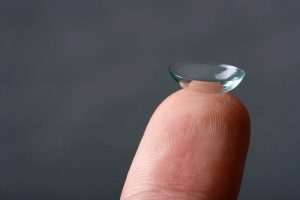
An intraocular lens (IOL) is a small, artificial lens that is implanted in the eye to replace the natural lens after cataract surgery or to correct vision problems such as nearsightedness, farsightedness, or astigmatism. The IOL is designed to mimic the function of the natural lens, focusing light on the retina to allow for clear vision. The global Intraocular Lens (IOL) Market was valued at $3.8 billion in 2021, and is projected to reach $6.5 billion by 2031, growing at a CAGR of 5.6% from 2022 to 2031.
IOLs are typically made of a biocompatible material, such as silicone or acrylic, that is well-tolerated by the eye. There are several types of IOLs available, including monofocal, multifocal, and toric IOLs, each designed to address different vision problems.
Monofocal IOLs are designed to provide clear vision at one distance, typically either distance or near. Multifocal IOLs, on the other hand, are designed to provide clear vision at multiple distances, allowing for greater visual freedom. Toric IOLs are designed to correct astigmatism, a common condition that causes blurred vision due to an irregularly shaped cornea.
Overall, IOLs are an effective and commonly used treatment option for a variety of vision problems, and can greatly improve the quality of life for individuals who undergo cataract surgery or who have other vision problems.
The type of intraocular lens (IOL) that is most popular may vary depending on several factors, including patient preferences, surgeon experience and expertise, and healthcare system policies. However, currently, monofocal IOLs are the most commonly used type of IOLs worldwide.
Monofocal IOLs are designed to provide clear vision at one distance, typically either distance or near, but not both. They are the most basic type of IOL and have been in use for many decades. They can provide good vision at the targeted distance, but often require the use of glasses or contact lenses for other distances.
Multifocal IOLs and toric IOLs are also gaining popularity in recent years, especially among patients who wish to have greater visual freedom and reduce their dependence on glasses or contact lenses. Multifocal IOLs can provide clear vision at multiple distances, while toric IOLs are designed to correct astigmatism. However, these types of IOLs may have some trade-offs and may not be suitable for everyone.
The decision on which type of IOL to use will depend on many factors, including the patient’s individual needs, the surgeon’s recommendations, and the available options within the healthcare system. It is important to discuss the benefits and potential risks of each type of IOL with a qualified eye care professional to make an informed decision.
https://www.alliedmarketresearch.com/request-sample/2092
Who makes intraocular lenses?
Intraocular lenses (IOLs) are made by several companies around the world. Some of the major manufacturers of IOLs include:
- Alcon: A division of Novartis, Alcon is one of the largest manufacturers of ophthalmic products in the world, including IOLs.
- Johnson & Johnson Vision: A division of Johnson & Johnson, this company produces a wide range of IOLs for cataract surgery and other vision correction procedures.
- Bausch + Lomb: A subsidiary of Bausch Health Companies, Bausch + Lomb produces IOLs, contact lenses, and other eye care products.
- Carl Zeiss Meditec: A division of Carl Zeiss AG, this company produces a range of ophthalmic products, including IOLs.
- Hoya: A Japanese company that produces IOLs, as well as other optical products such as eyeglass lenses.
These are just a few examples of the many companies that produce IOLs. The specific type and brand of IOL used will depend on several factors, including the patient’s needs, the surgeon’s expertise, and the available options within the healthcare system. It is important to discuss the benefits and potential risks of each type of IOL with a qualified eye care professional to make an informed decision.
Intraocular lenses (IOLs) are designed to be permanent replacements for the natural lens of the eye. The lifespan of an IOL can vary depending on several factors, including the type of IOL, the patient’s individual health and lifestyle, and the surgical technique used to implant the IOL.
In general, most IOLs are designed to last for the lifetime of the patient. Some studies have shown that the vast majority of patients who undergo cataract surgery with IOL implantation do not require additional surgical intervention for the IOL in their lifetime.
However, it is important to note that some patients may experience complications or problems with their IOL over time. For example, some IOLs may become dislocated or misaligned, which can cause vision problems and require additional surgery to correct. Additionally, some patients may develop a condition called posterior capsule opacification (PCO), in which the membrane behind the IOL becomes cloudy and affects vision. This can be treated with a quick and simple laser procedure called YAG capsulotomy.
It is important for patients to attend regular eye exams and follow up with their eye care professional if they experience any changes in their vision or other symptoms related to their IOL. With proper care and follow-up, most patients can expect their IOL to last for many years or even decades.

